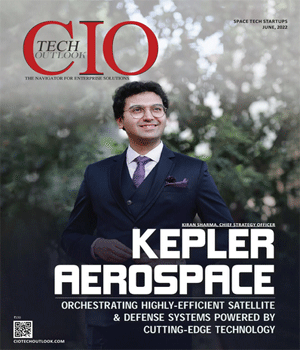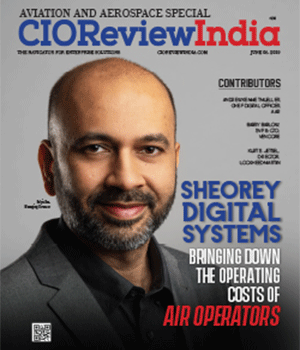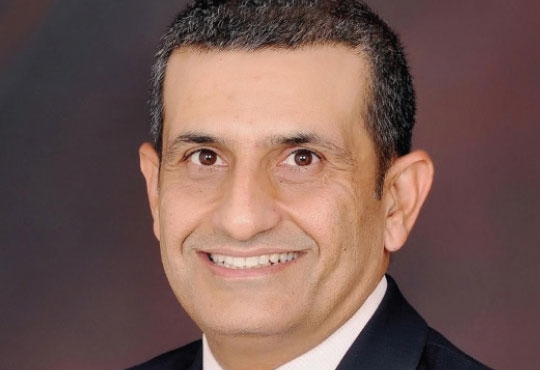Seamless Technology from Ground to Air
Ken Green, CIO, NetJets | Wednesday, 08 June 2016, 11:46 IST
 In the last 20 years, the world has become completely interconnected through complex networks and everchanging technology. Tasks that two decades ago may have taken hours or days to complete, may now be achieved with the touch of a screen. Dozens of conversations are monitored simultaneously on a variety of channels in real time. Mobile devices like cell phones, tablets, and laptops have made connectivity ubiquitous. High speed cellular networks and prevalence of WiFi make consumption of data possible anywhere.
In the last 20 years, the world has become completely interconnected through complex networks and everchanging technology. Tasks that two decades ago may have taken hours or days to complete, may now be achieved with the touch of a screen. Dozens of conversations are monitored simultaneously on a variety of channels in real time. Mobile devices like cell phones, tablets, and laptops have made connectivity ubiquitous. High speed cellular networks and prevalence of WiFi make consumption of data possible anywhere.
We live in an ‘on-demand’ society that continues to set new levels of expectation through the ‘consumerization’ of information technology. Today, the way companies and organizations share information, interact with consumers and engage their stakeholders, is critical to their long-term viability and success. The integration of consumer facing technology is no longer a ‘perk’—it’s a baseline expectation for doing business. These services are expected both on the ground as well as in the air.
The fact is, more people are using air travel for business and leisure than ever before. In 2014, there were 3.3 billion air travelers—up 800 million from 2009 (source IATA). Commercial airlines have rapidly installed WiFi systems on aircraft and integrated complex systems that allow passengers to watch movies, TV shows, track flight status on their devices and most importantly, stay connected to what’s happening on the ground by communicating with those at home or in the office. Passengers in flight can communicate via email, share files, even participate in web based conferences or meetings.
Business jet customers expect the same, if not higher levels of service, on their aircraft. After all, they buy into the most premium service in the sky. Private jets are designed with first-class luxuries and amenities. It seems reasonable customers would expect to use their own devices at 37,000 feet in the same way they use them on the ground. But the challenges are considerable and in many cases prohibitive for business jet service providers.
NetJets for example recently broke the mold of customer facing technology on the aircraft with an elaborate installation of an AVOD in-flight entertainment system in coordination with GoGo. This new system coupled with Text & Talk and WiFi put the private aviation provider ahead of the rest. NetJets has also developed a dedicated Owner (customer) Portal app and is soon launching a iOS app designed for consumer mobile devices that can be used onboard the aircraft to access information about future flights or update a profile and content can be personalized for the customer onboard experience.
Other carriers offer one off services (an app or WiFi) but the most significant limitation for offering a full range of tech amenities for many carriers is cost. Most private aviation companies have small fleets, less than 100 aircraft. The investment for installation and operation of in-flight entertainment systems and WiFi can run upwards of $200,000 per aircraft—a cost that can price small
carriers out of the market. In addition to the implementation costs, the logistics of upgrades, repairs, and other maintenance is extremely difficult in the business jet world. There is also the issue of keeping the data fresh. The way the NetJets in-flight entertainment systems work, a server is installed on the aircraft that automatically updates content upon landing at specific locations where connections are set up. Most other carriers or operators use various methods to manually update content.
In addition, connectivity is not always reliable in the air. Cellular speeds above 10,000 feet (although vastly improving) are not what they are on the ground and when traveling overseas, the European cellular infrastructure is less consistent. Overseas systems must be satellite based and impose additional costs to implement. And, it’s not just entertainment data that moves across the aircraft’s WiFi, it’s data sent while conducting business. When it comes to security, the confidentiality, integrity, and availability of information is always a concern.
On the flip side, if a carrier can afford the system investment and maintenance costs, there is a significant benefit of the “consumerization” of aircraft in-flight entertainment. As heavy and expensive plug-in monitors are being replaced with PEDs—which are considered “loose equipment”and not subject to the expensive certification process—carriers are able to reduce weight and cost on the aircraft.
As technology changes, it is critical that the aviation industry continue to progress and innovate to bring a seamless technology experience from ground to air.
CIO Viewpoint
Leveraging Digitalization to Deliver Seamless...
By Abhrasnata Das
Digitalization of Aviation will Continue to Evolve
By Janifha Evangeline
StreamlineTechnologies to Build a Transparent...
By Rishi Sareen, Vice President-IT, Ecom Express
CXO Insights
Streamlining Global Aviation: The Role of IT...
By Sourav Sinha, CIO, Beond
Enhancing the Operational Efficiency in...
By Aarti Singh, Director IT & DA Center & CIO, Boeing India
A New World Order is Taking Shape




.jpg)
.jpg)
.jpg)



